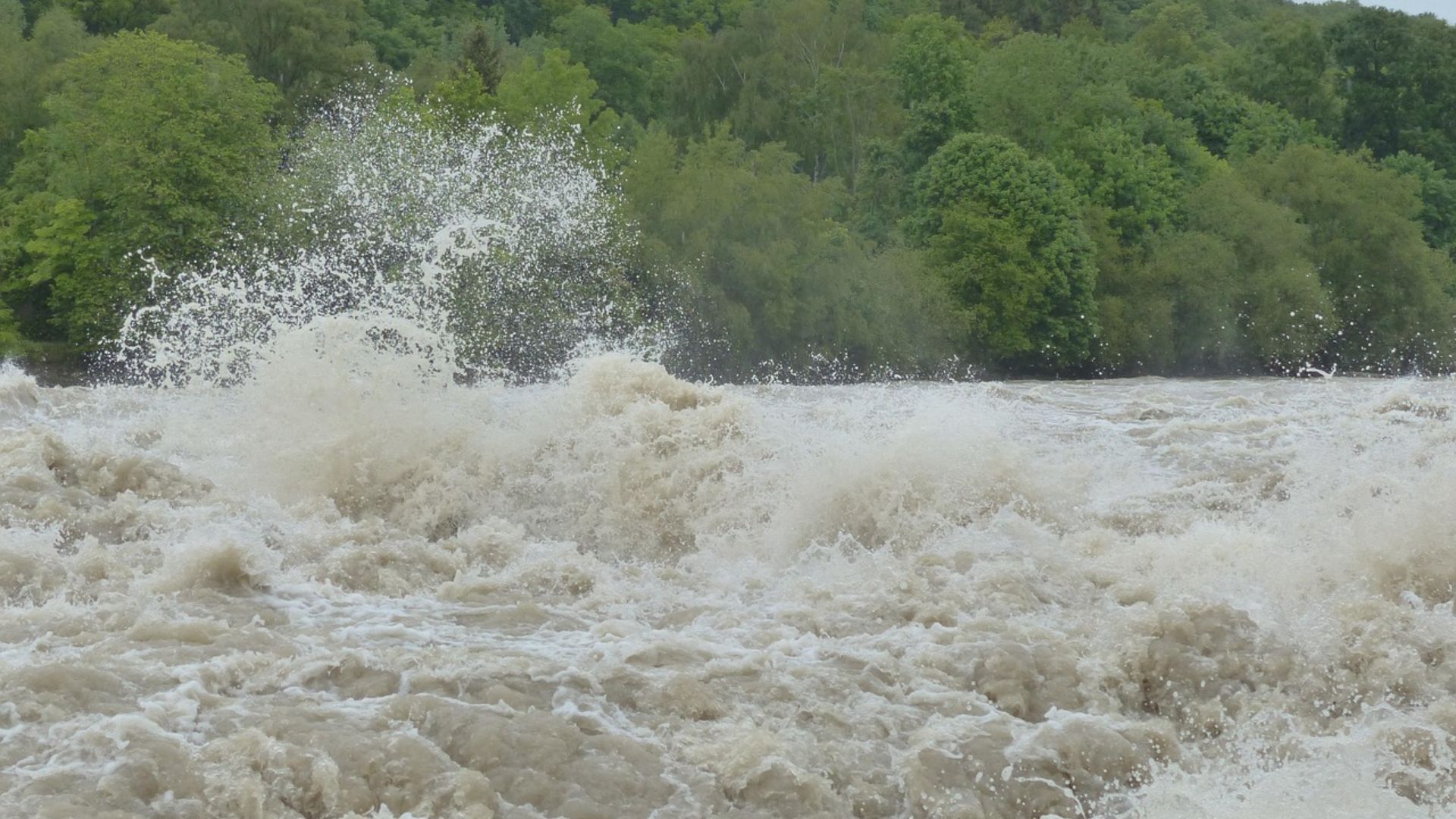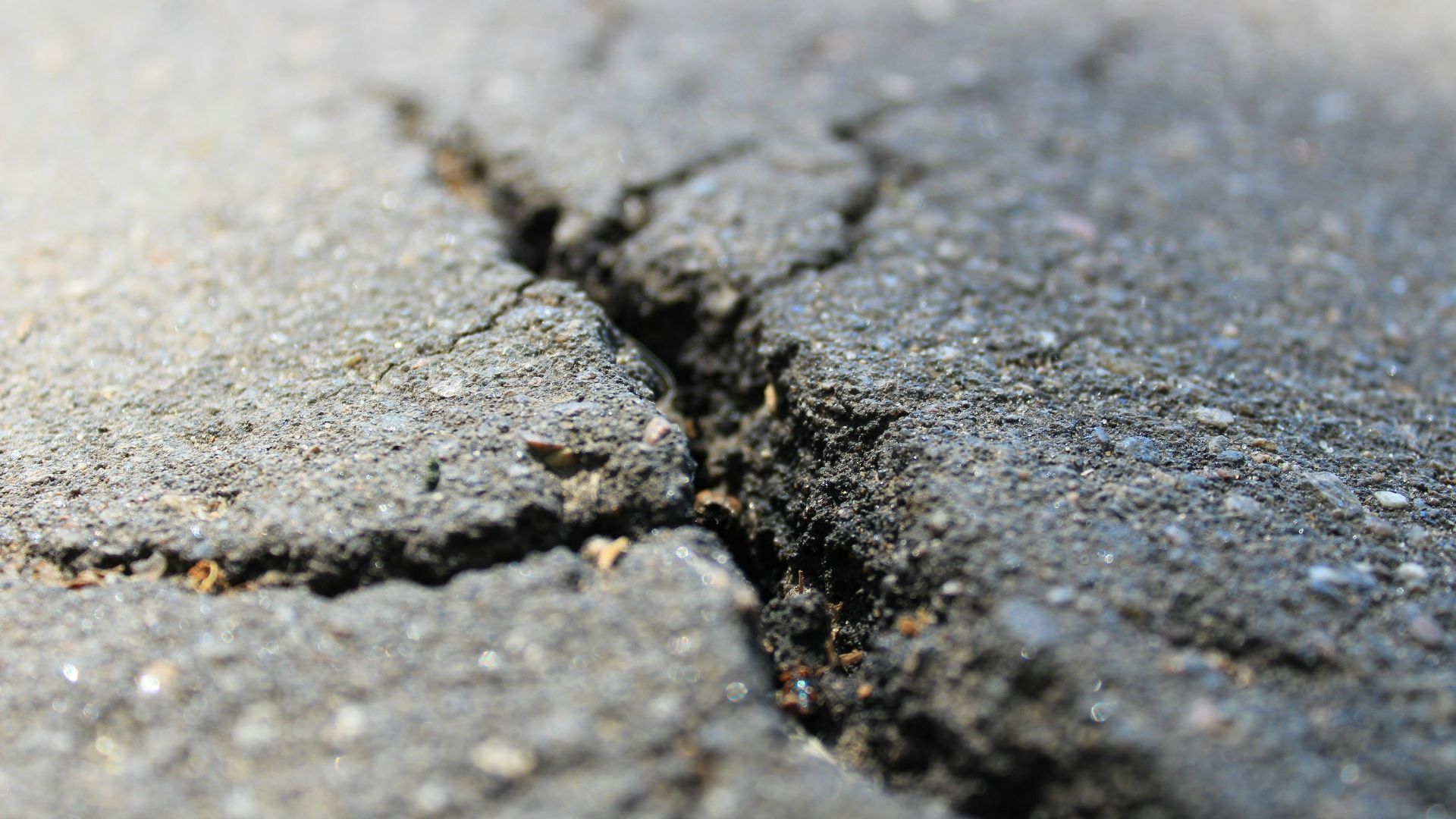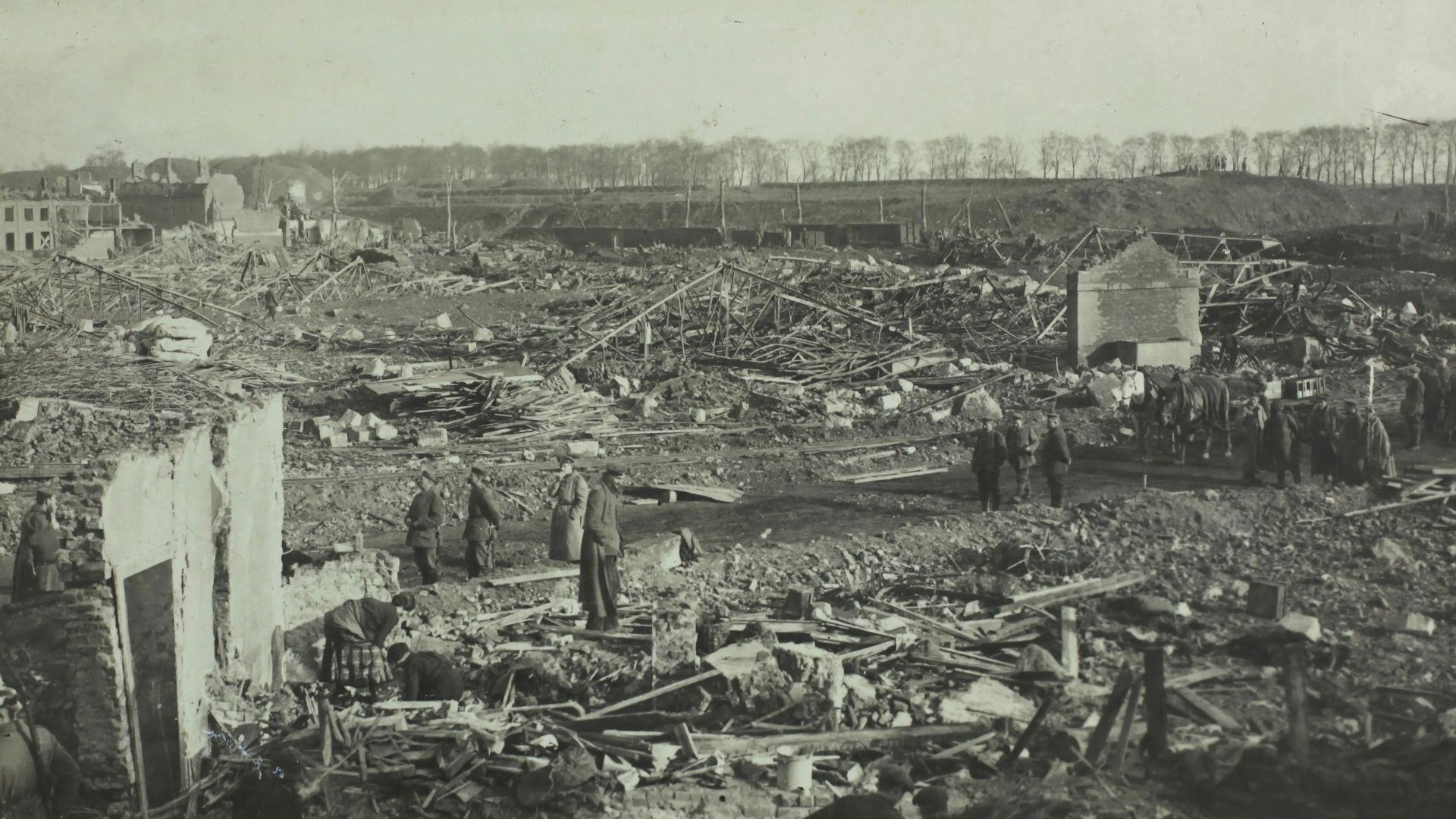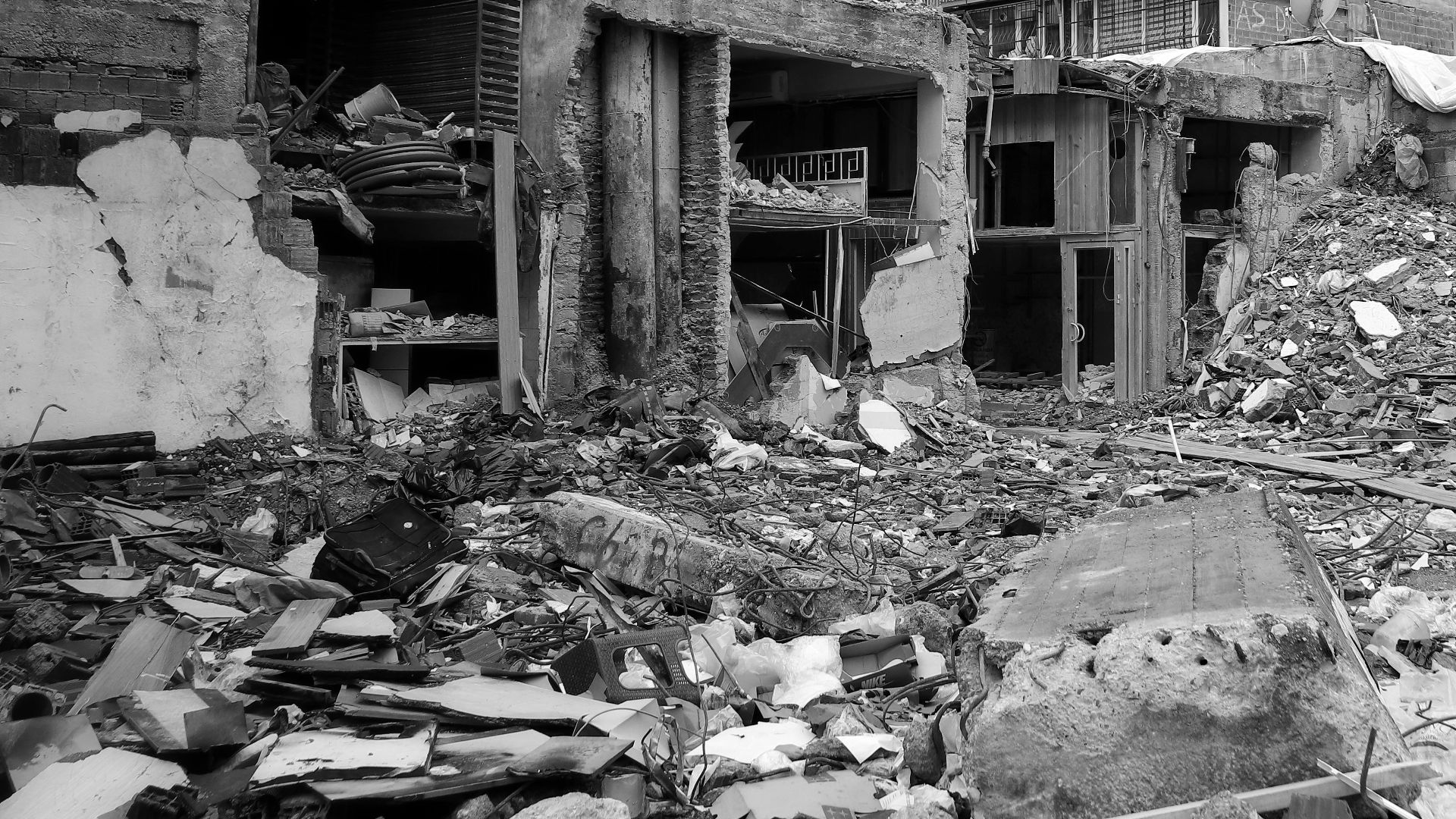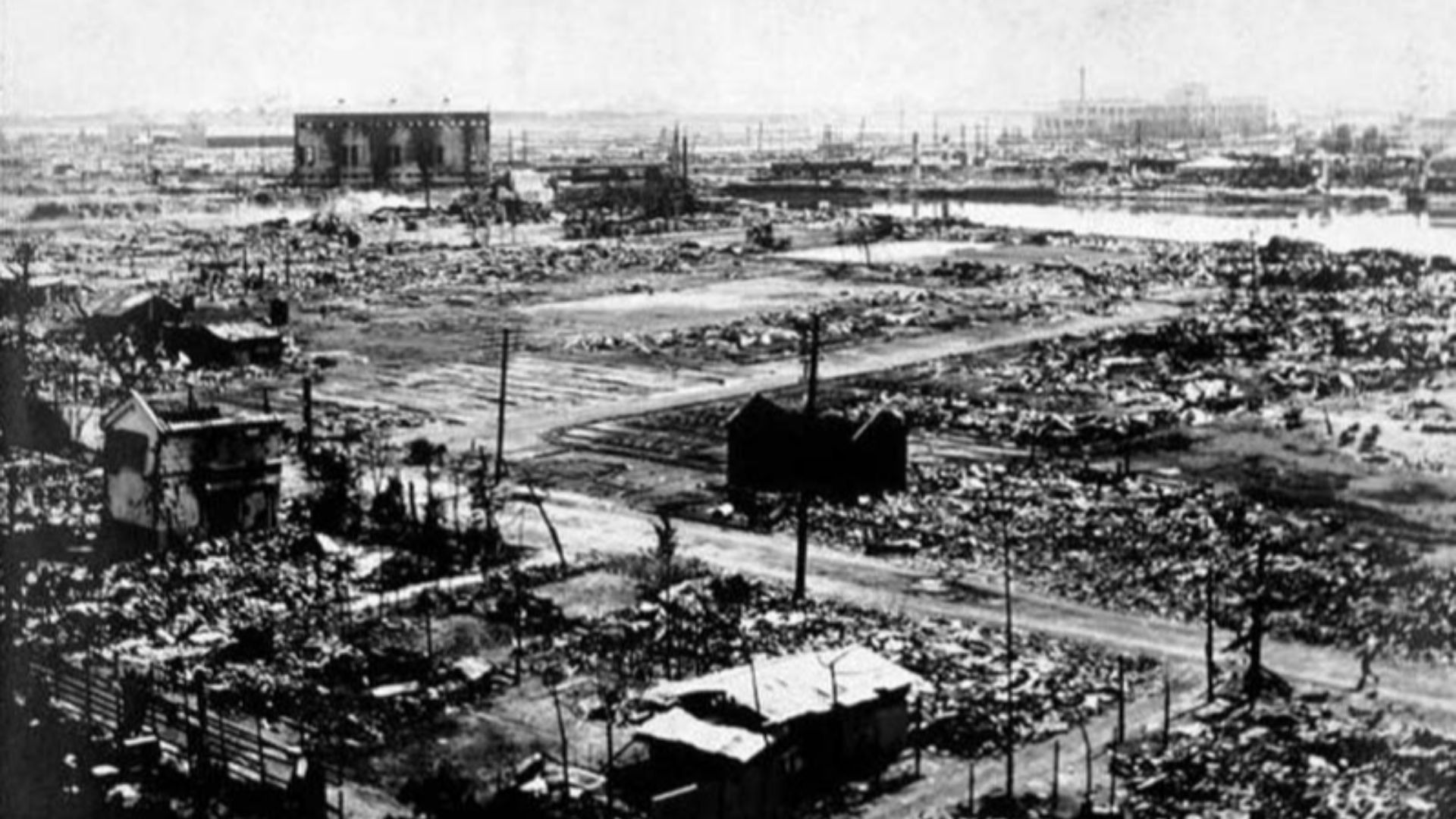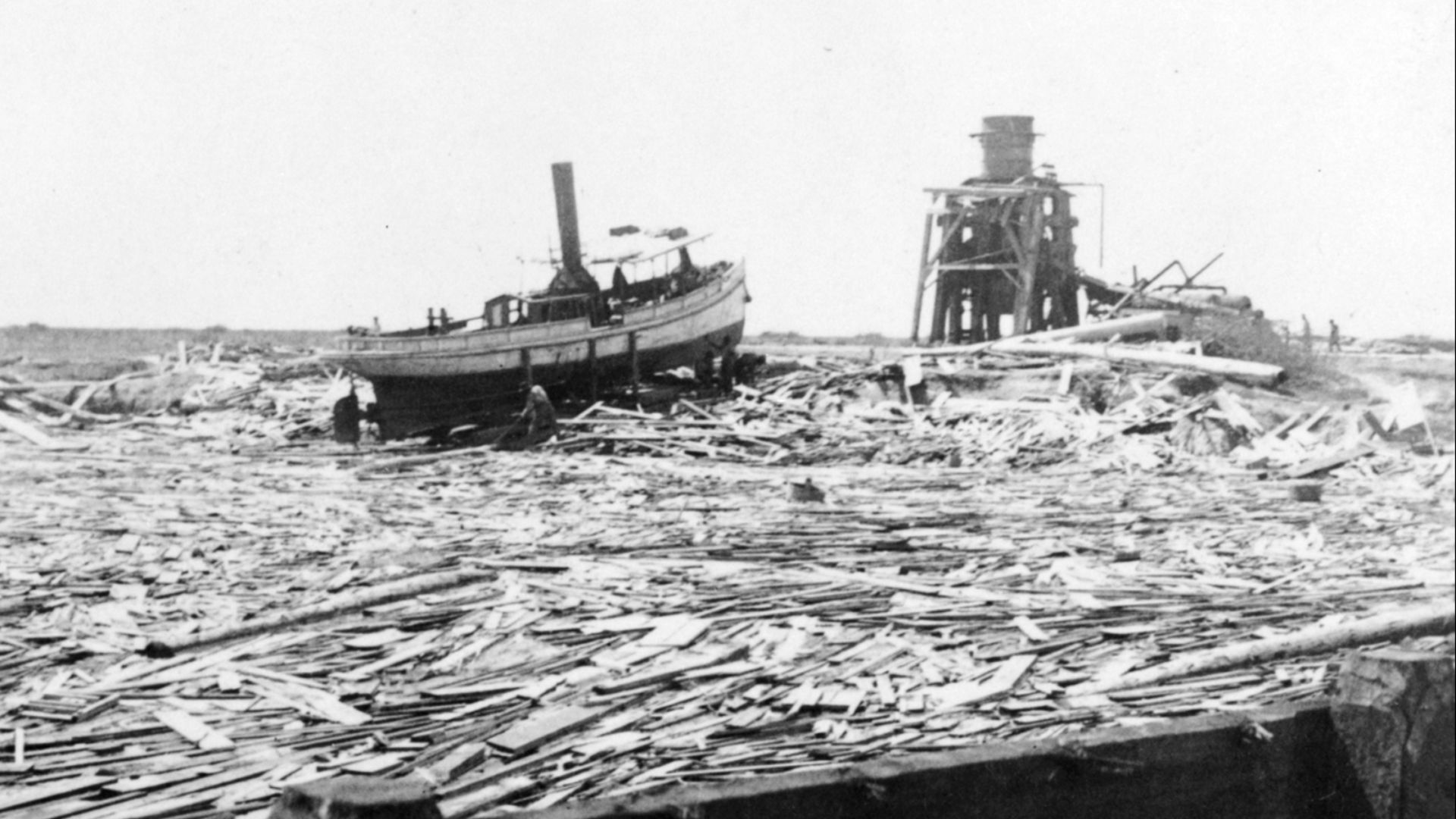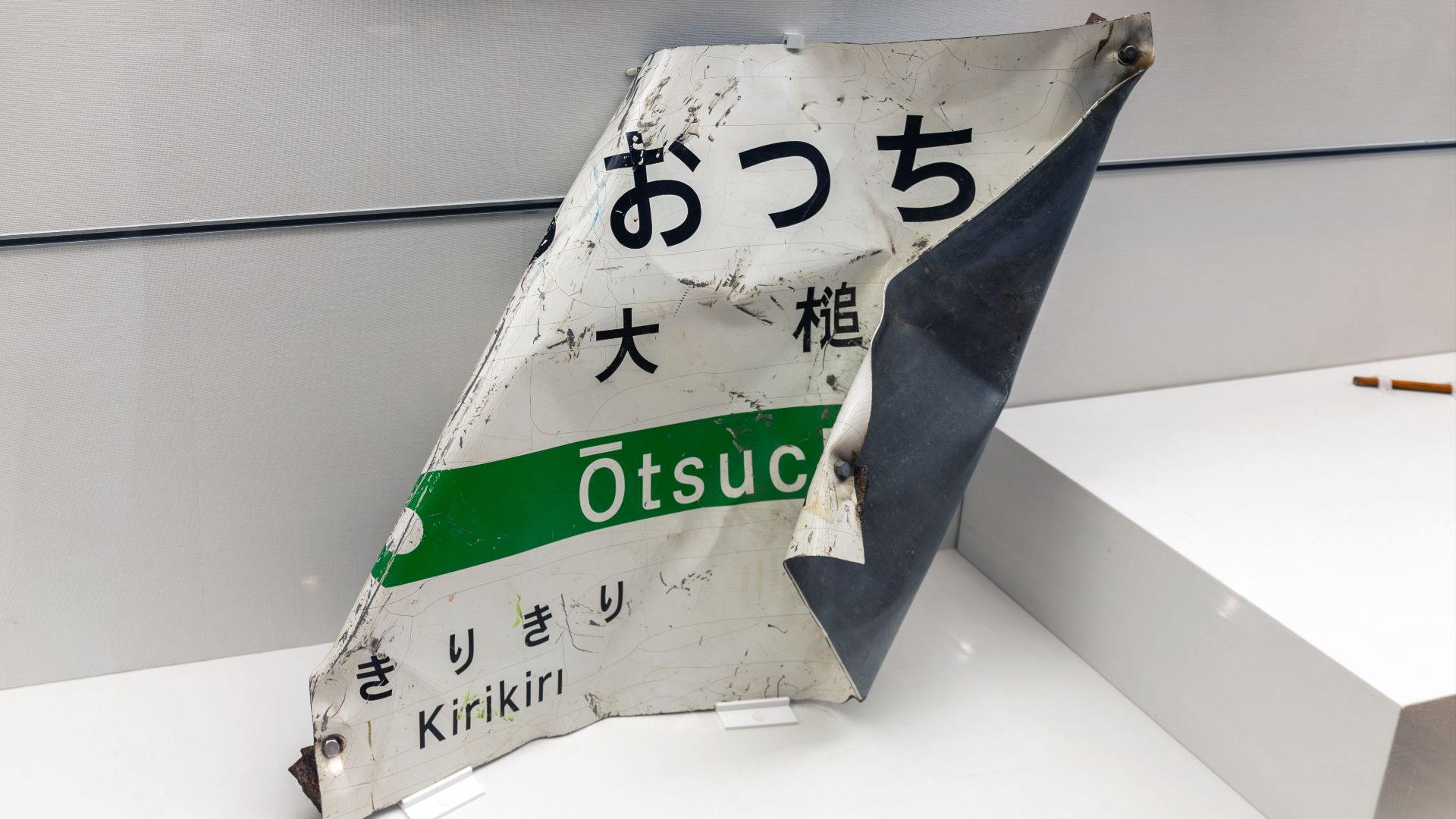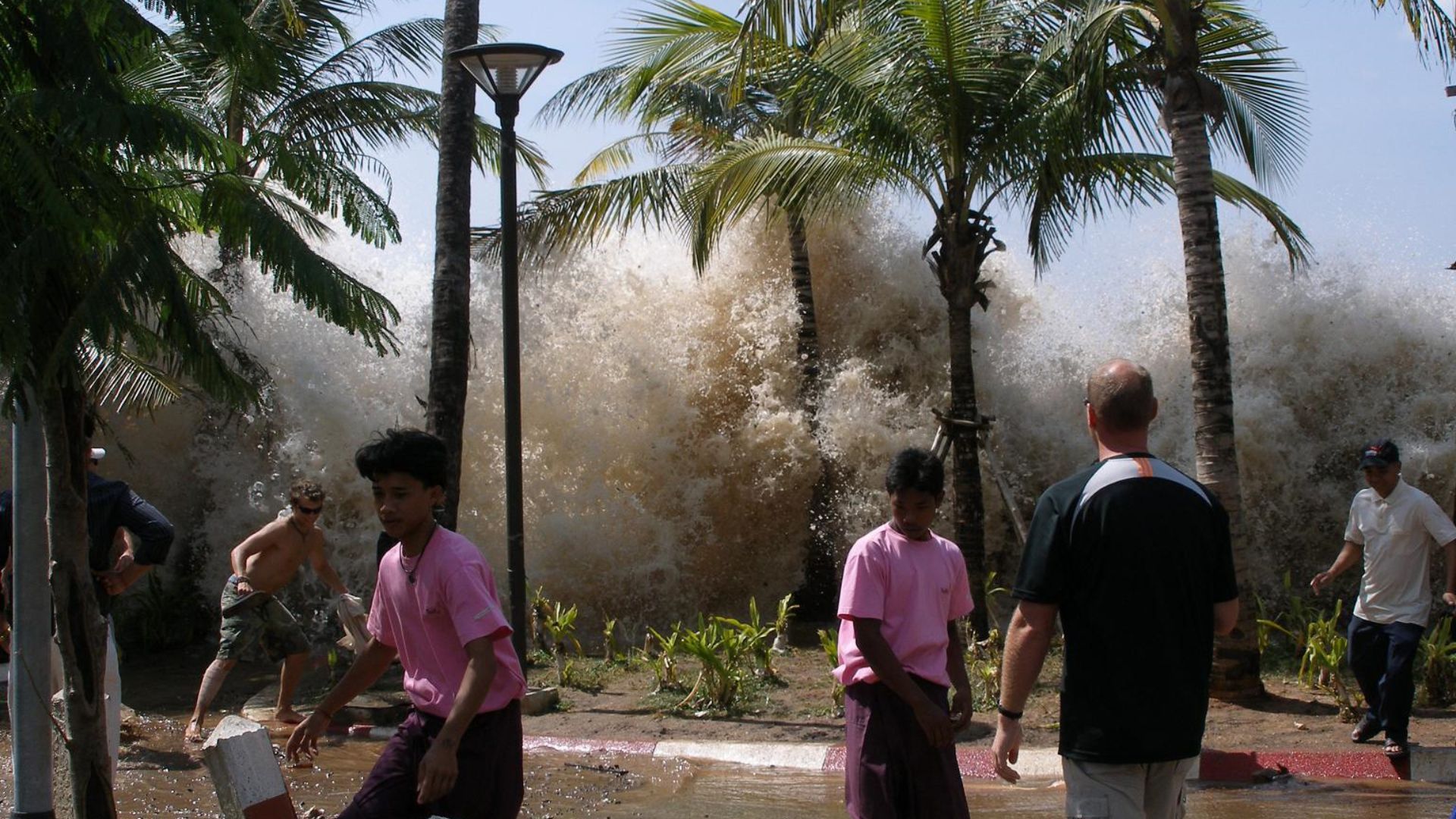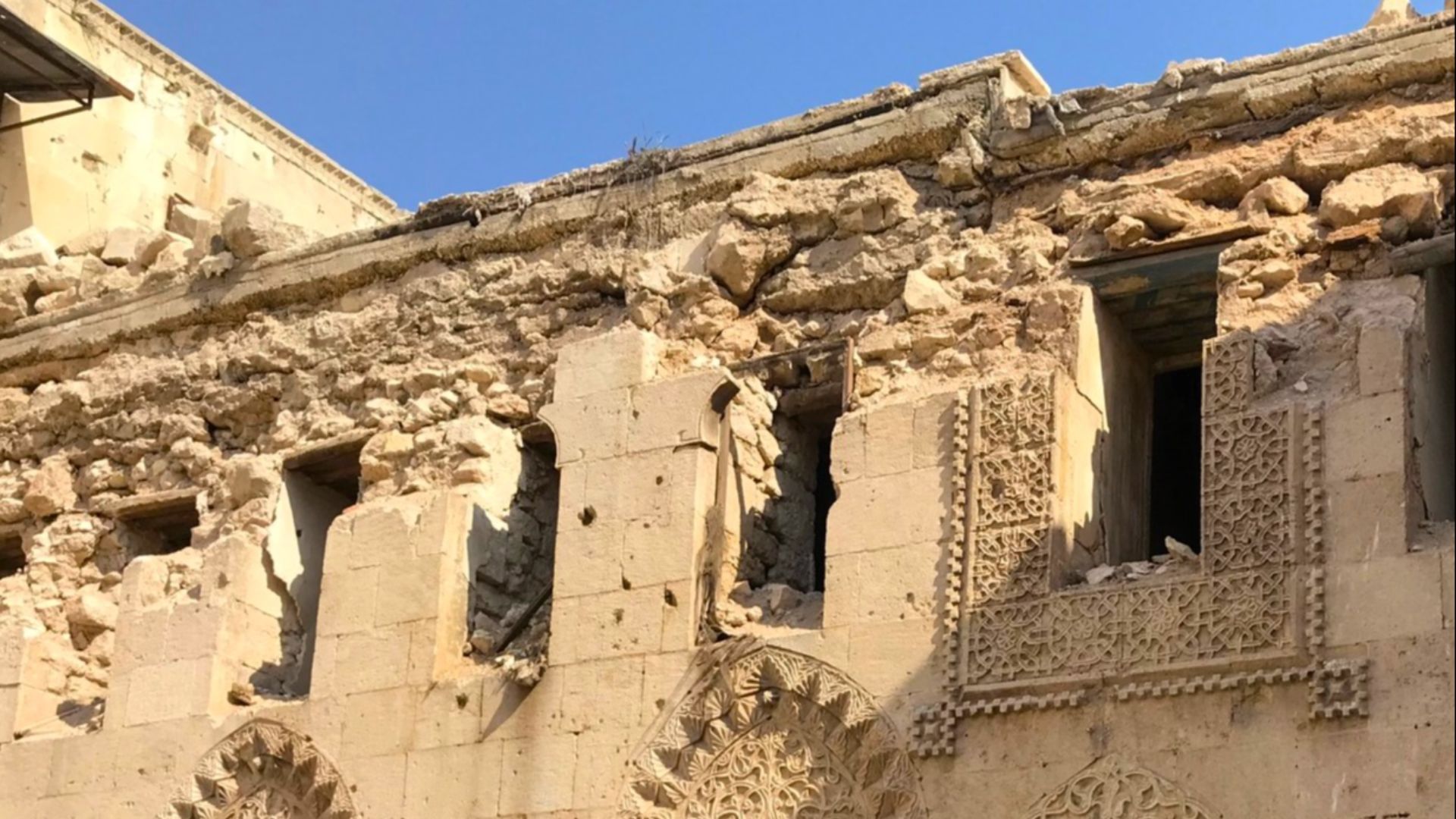Tragic Natural Disasters That Rocked the World
Some of the world's deadliest natural disasters—earthquakes, hurricanes, tsunamis, volcanic eruptions, floods, wildfires, and droughts—kill thousands of people each year. While many ancient catastrophic disasters were once lost to history, current technology has made it possible to measure just how violent some of these events were. From the Yangtze River flood to the eruption of Mount Tambora, here are the 20 worst natural disasters in history.
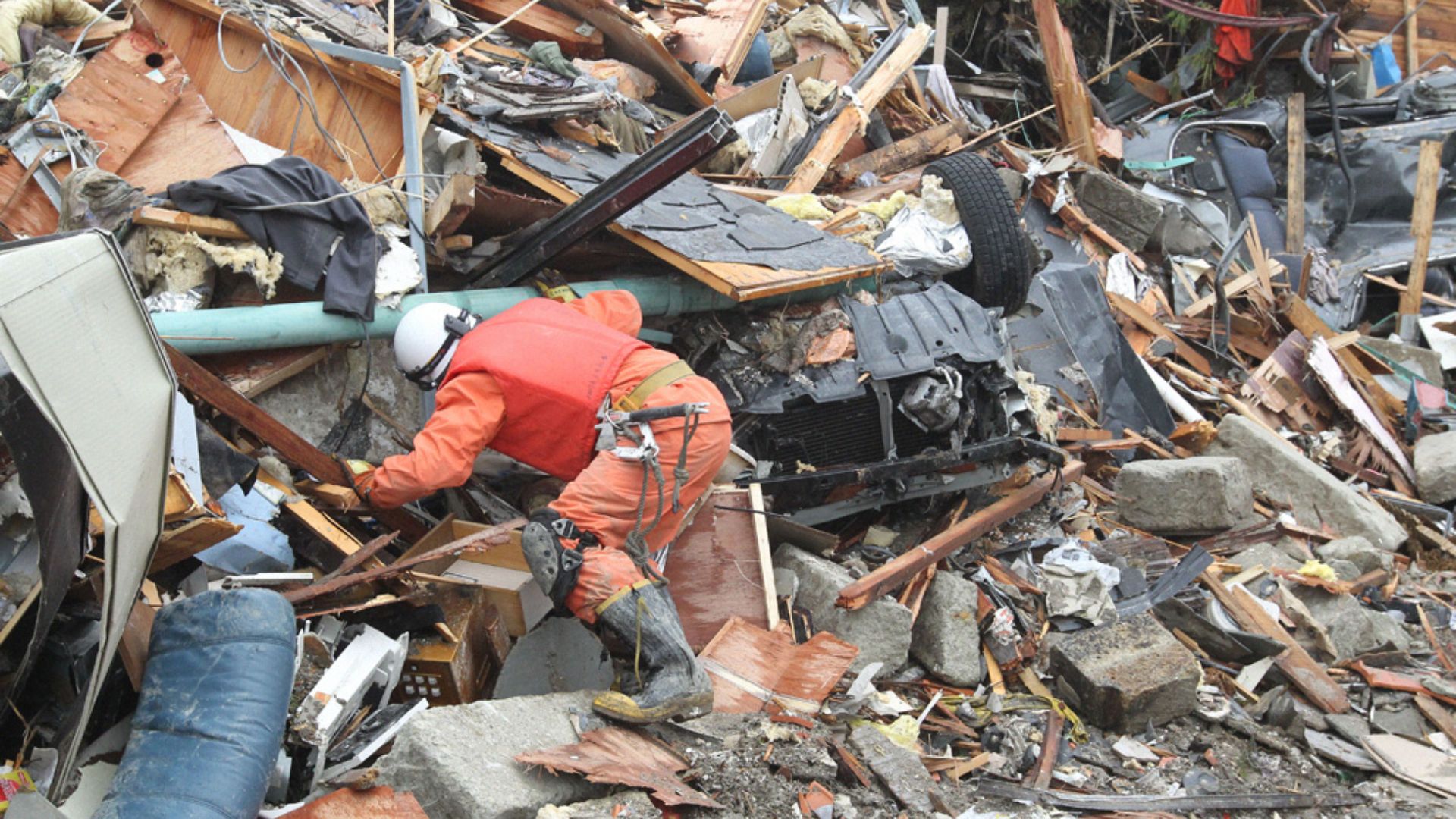 Iliya Pitalev / Илья Питалев on Wikimedia
Iliya Pitalev / Илья Питалев on Wikimedia
1. Yangtze River Flood
Also known as the 1931 Yangtze–Huai River floods, this devastating natural disaster struck several major cities—including Wuhan and Nanjing—and lasted two months, from June to August. Estimates by government organizations, such as the National Oceanic and Atmospheric Administration, claim that around 3.7 million lives were lost. The flood affected more than 50 million people.
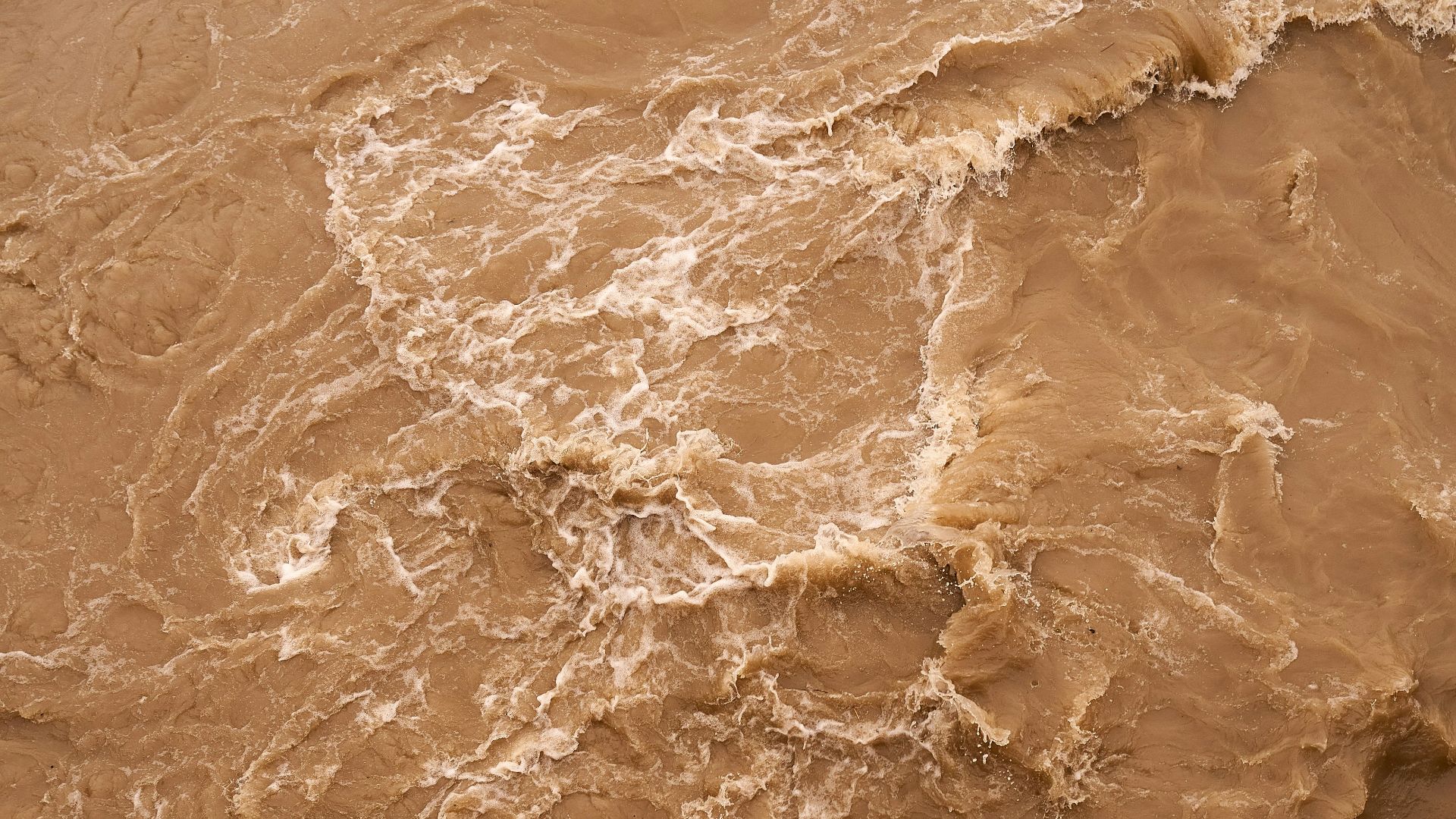 Wolfgang Hasselmann on Unsplash
Wolfgang Hasselmann on Unsplash
2. Yellow River Flood
Pelted by days of heavy rain, the already-swollen Huang He (Yellow River) broke through manmade dikes in 1887 and swept over Henan province, before spreading quickly throughout Northern China. It's estimated to have stretched 50,000 square miles and claimed up to 2 million lives.
3. Tangshan Earthquake
The 1976 Tangshan earthquake was a 7.6-magnitude earthquake that struck the industrial city of Tangshan, located just east of Beijing. The shaking lasted around 15 seconds, yet caused irreversible damage, collapsing buildings, bridges, and highways. The official count stated 242,000 deaths, but it may have been as high as 655,000.
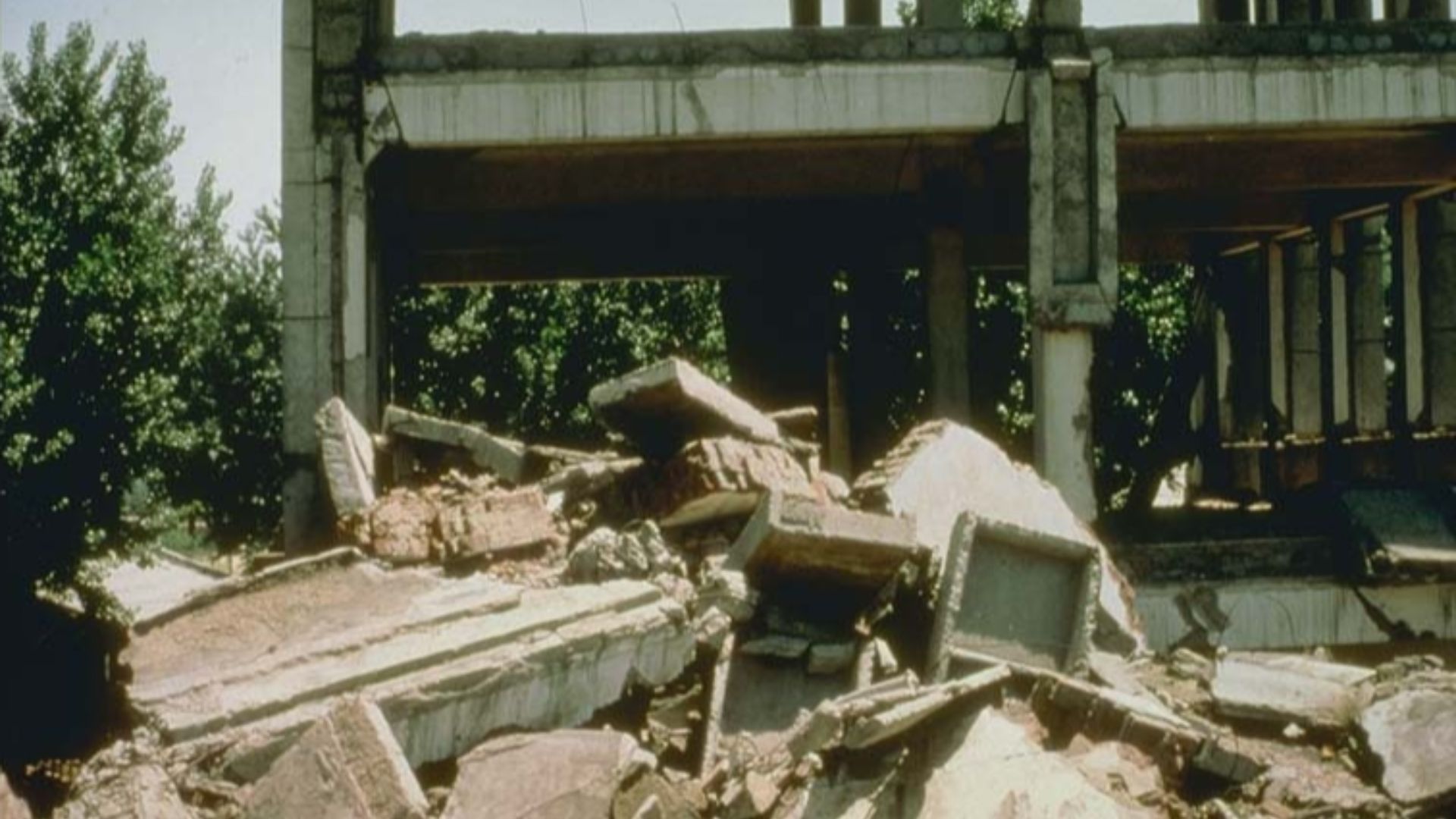 The National Oceanic and Atmospheric Administration on Wikimedia
The National Oceanic and Atmospheric Administration on Wikimedia
4. Shaanxi Earthquake
The Shaanxi earthquake of 1556 is said to be the deadliest earthquake ever recorded. On January 23, an eight-magnitude earthquake struck the Shaanxi province and the neighboring Shanxi district, devastating both regions. It's estimated to have killed or seriously injured 830,000 people, and is thought to have reduced the population of both provinces by 60%.
5. Bhola Cyclone
Also known as the Great Cyclone of 1970, this catastrophic disaster hit East Pakistan (modern-day Bangladesh) and India's West Bengal, and is estimated to have killed as many as 500,000 people. To this day, it remains the deadliest tropical cyclone ever recorded.
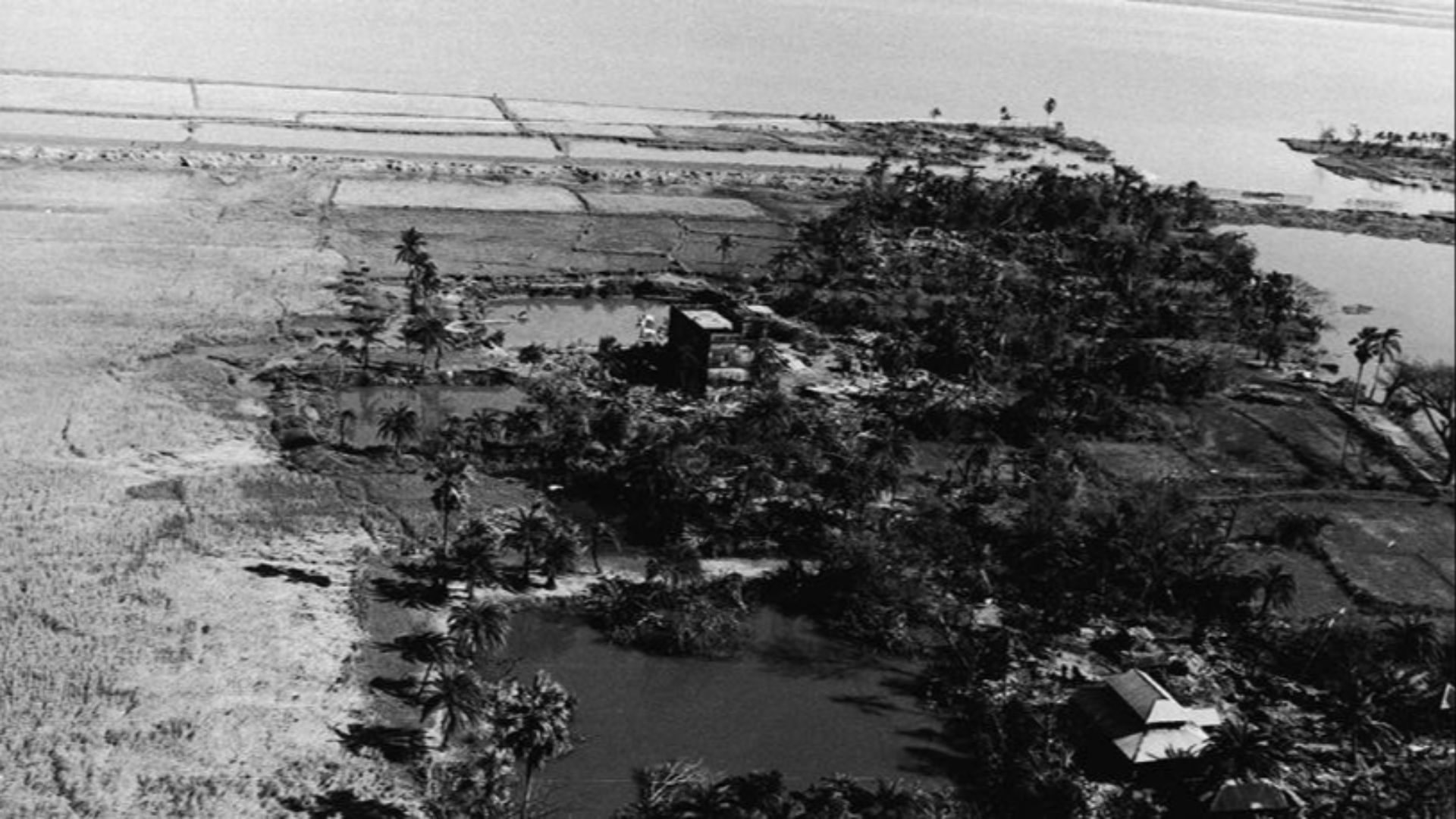 Express Newspapers/Getty Images on Wikimedia
Express Newspapers/Getty Images on Wikimedia
6. Haiti Earthquake
On January 12, 2010, a seven-magnitude earthquake struck Haiti, the epicenter just 16 miles west of the country's capital, Port-au-Prince. Aftershocks were recorded to be magnitudes of 5.9 and 5.5, and tremors still continued a week later. An estimated 3 million people were affected by the disaster, and 200,000 to 300,000 people died as a result.
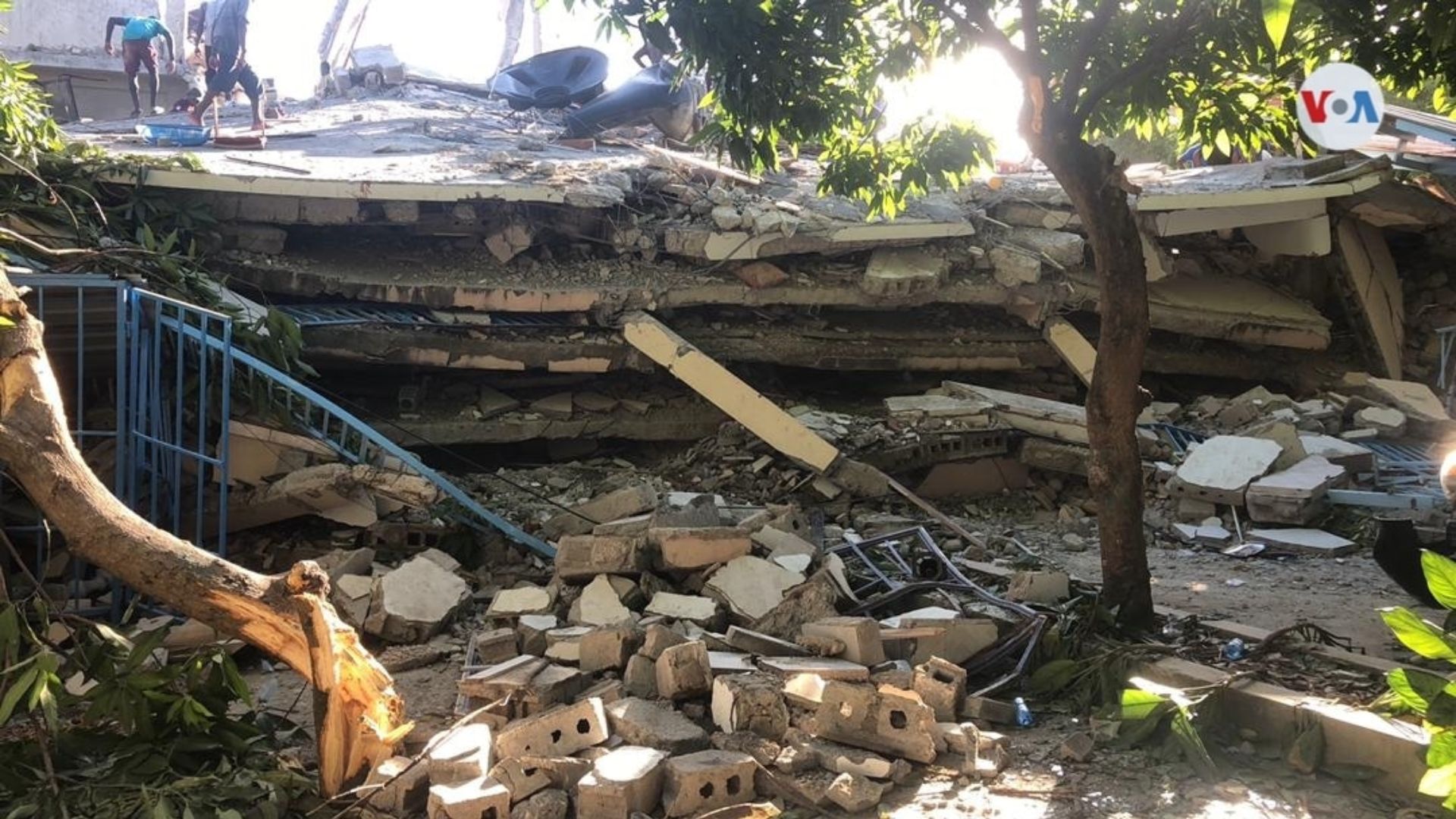 Makenson Charles and Matiado Vilme/VOA on Wikimedia
Makenson Charles and Matiado Vilme/VOA on Wikimedia
7. Antioch Earthquake
The 526 Antioch earthquake hit Syria, specifically the city of Antioch in the Byzantine Empire, sometime between May 20 and 29. A fire broke out shortly after the tremors—which was estimated to be a magnitude of seven—started, destroying any last remaining buildings. It's estimated to have killed 250,000 to 300,000 people.
8. Coringa Cyclone
The second-deadliest storm ever recorded after the Bhola disaster is the 1839 Coringa cyclone, which struck the port city and destroyed its harbor. The area was never rebuilt, and survivors were forced to relocate elsewhere. It's estimated to have claimed as many as 300,000 lives.
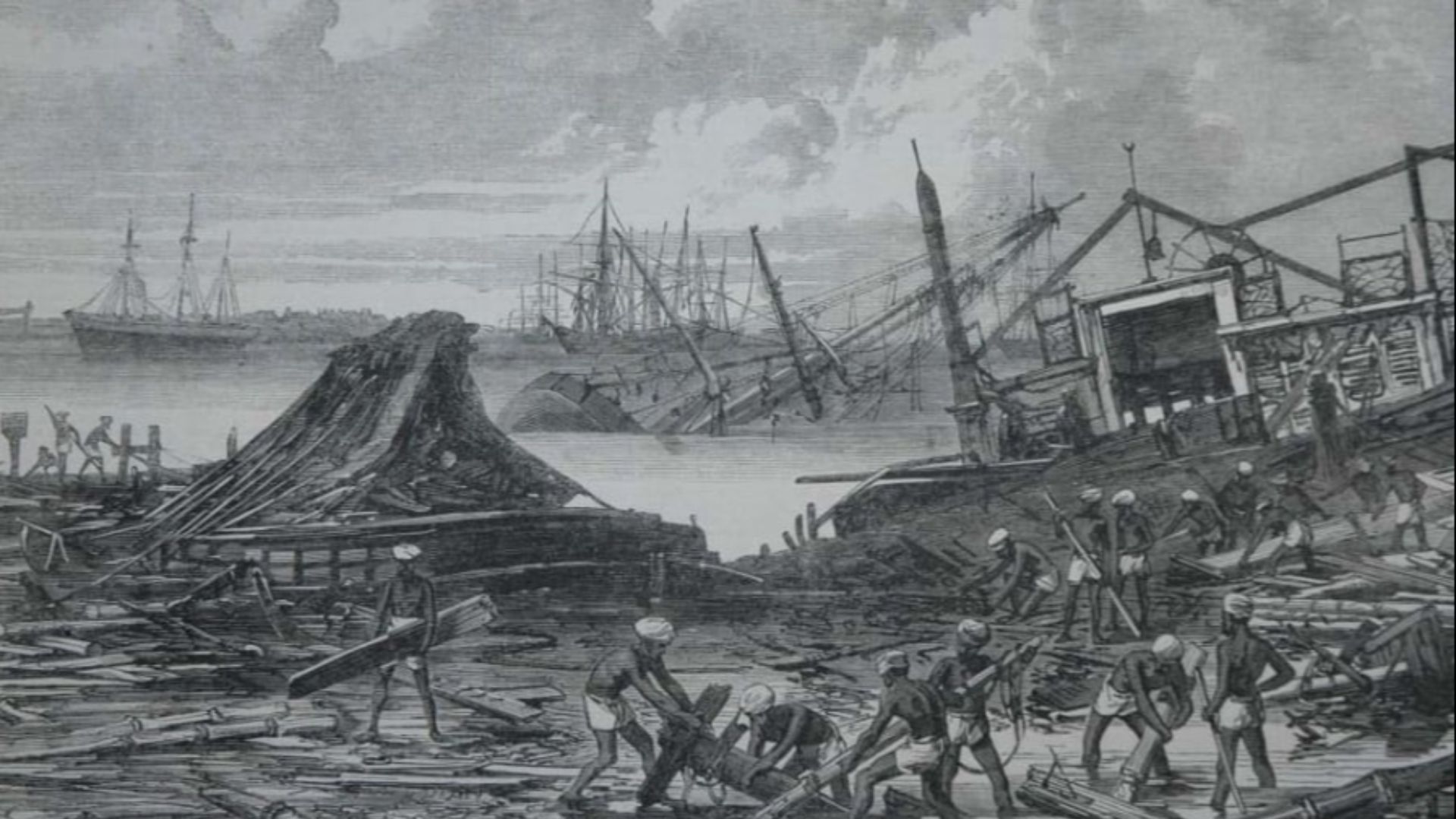 Monsters and Critics on Wikimedia
Monsters and Critics on Wikimedia
9. Calcutta Cyclone
Said to be one of the worst natural disasters in Indian history, the 1737 Calcutta cyclone took the lives of over 300,000 people, drowned innumerable wild animals, and sank ships bordering the Bay of Bengal. The storm finally dissipated four days later on October 13, after first rearing its head on October 9.
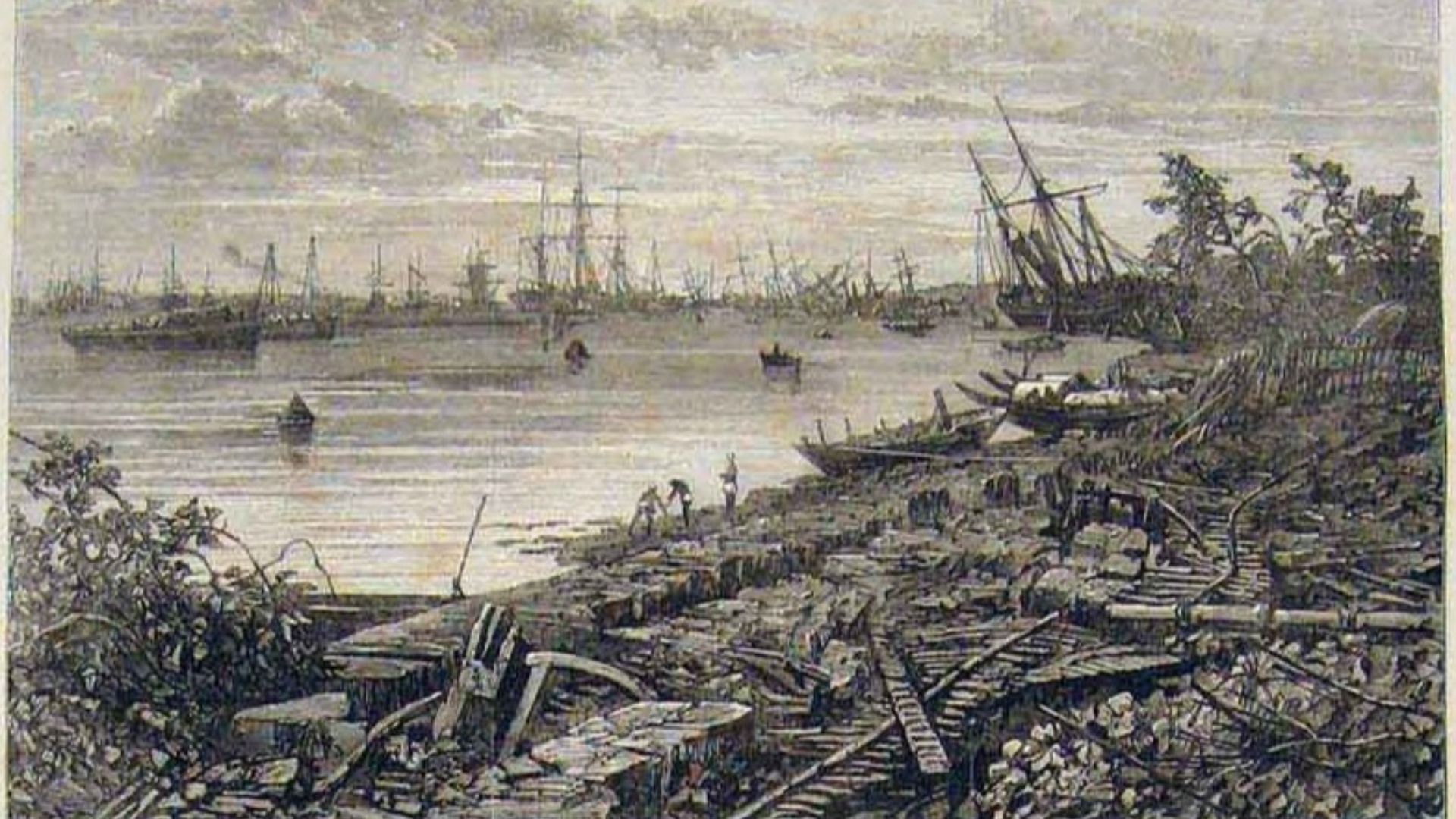 The Illustrated London News on Wikimedia
The Illustrated London News on Wikimedia
10. Haiyuan Earthquake
On the evening of December 16, 1920, at around 7PM local time, an 8.5-magnitude earthquake tore through Haiyuan County, claiming the lives of around 273,000 people. It's considered to be one of the largest and deadliest earthquakes affecting China in the last century, and a series of aftershocks continued to rock the province even three years later.
11. Ganja Earthquake
The 1139 Ganja earthquake was one of the deadliest earthquakes ever recorded. It rocked the Seljuk Empire and the Kingdom of Georgia (present-day Azerbaijan and Georgia) with an estimated magnitude of 7.0-7.7, and completely destroyed the city of Ganja. Around 230,000 to 300,000 lives were lost as a result.
12. Typhoon Nina–Banqiao Dam Failure
Also known in the Philippines as Super Typhoon Bebeng, this 1975 tropical cyclone started in the Philippine Sea and moved westward, striking Taiwan first. It then swept through China, causing a catastrophic collapse of the Banqiao Dam in Henan province. The extreme flooding killed at least 26,000 people, with another 150,000 dying due to disease, water contamination, and famine. More than 10 million were affected by the disaster.
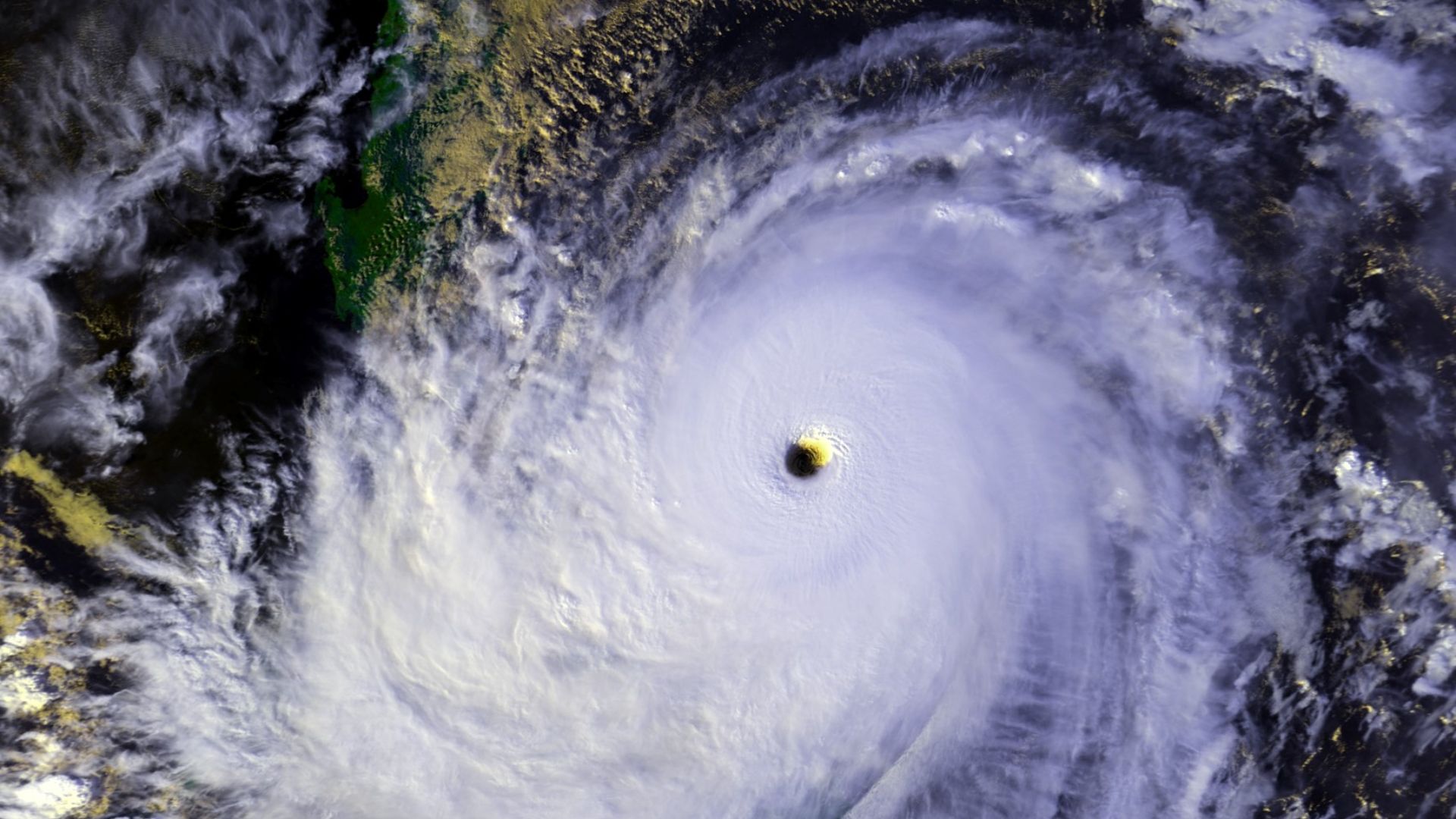 NOAA / Satellite and Information Service on Wikimedia
NOAA / Satellite and Information Service on Wikimedia
13. Great Kantō Earthquake
An 8-magnitude megathrust earthquake rocked the Kantō plain on September 1, 1923, with an epicenter located just 37 miles southwest of the capital city, Tokyo. The nightmare didn't stop there—fires broke out and were exacerbated by typhoon winds, devastating the capital and nearby cities, including Yokohama and surrounding prefectures. The death toll exceeded 140,000, and the disaster displaced many residents, leaving nearly 2.5 million people homeless.
14. Kashmir Earthquake
The 2005 Kashmir earthquake hit Azad Kashmir, a region under Pakistan control, the Khyber Pakhtunkhwa province, and the bordering areas of India and Afghanistan. It was measured as a magnitude of 7.6, and subsequent aftershocks caused landslides, debris avalanches, and falling rocks. More than 85,000 lives were lost, and over 3.5 million people were displaced.
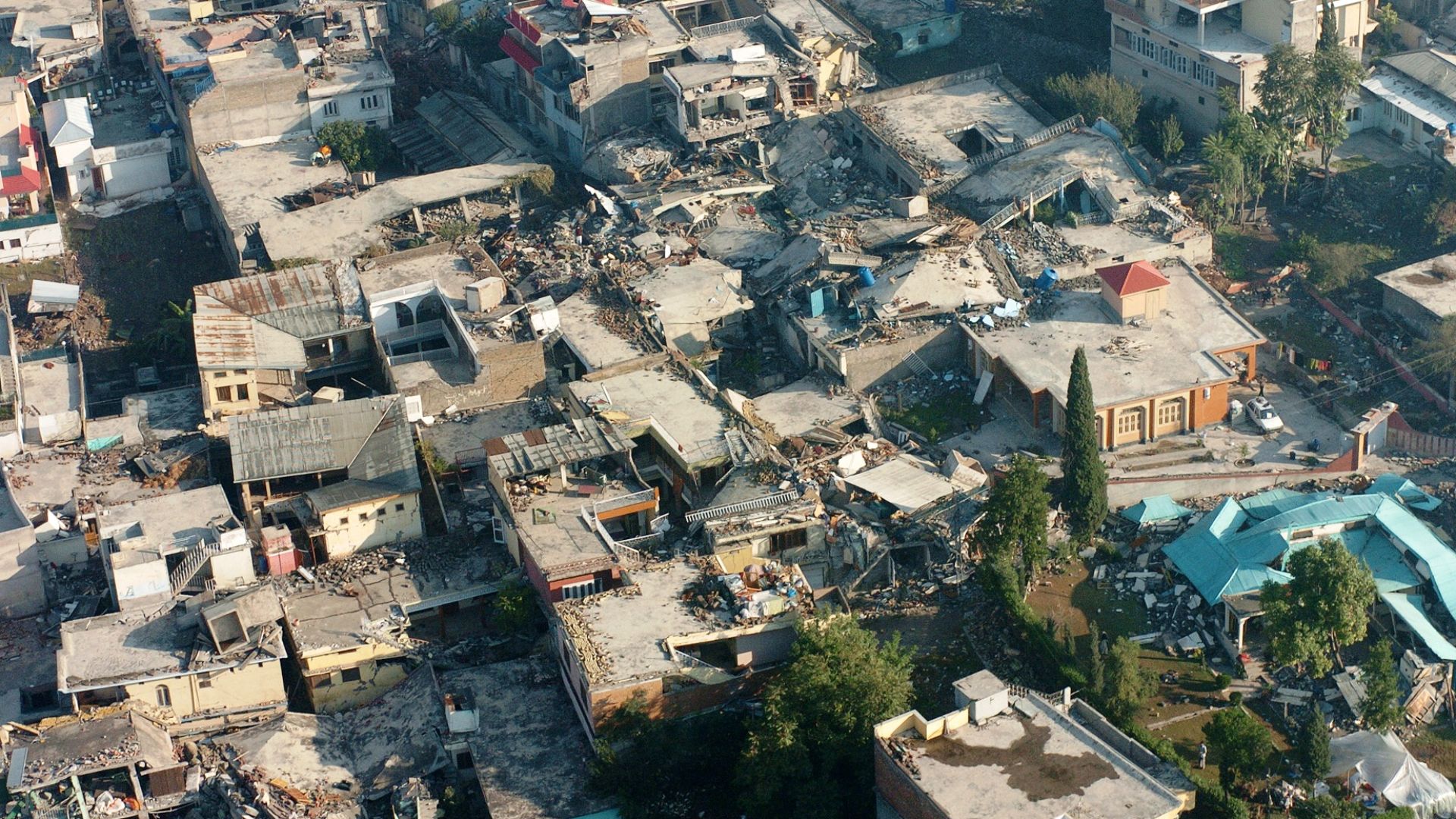 Timothy Smith, U.S. Navy on Wikimedia
Timothy Smith, U.S. Navy on Wikimedia
15. Galveston Hurricane
Also known as the Great Galveston Hurricane or the 1900 Storm, this catastrophic tropical cyclone remains, to date, the deadliest hurricane and natural disaster in the US. The storm decimated Galveston, a city that had then only 38,000 residents, killing more than 8,000 people and leaving many more homeless.
16. Tōhoku Earthquake and Tsunami
On March 11, 2011, a megathrust earthquake measuring a magnitude of 9.1 struck the northeast rim of Honshu, Japan. Tremors lasted six minutes, ensuing a tsunami that's estimated to have reached heights as high as 133 feet. To date, it stands as the most powerful earthquake ever recorded in the country, and the fourth most powerful in the world. It resulted in devastating loss, with over 19,000 deaths and more than 2,000 missing. The tragedy is sometimes referred to as 3.11 (san ten ichi ichi) by locals.
17. Indian Ocean Earthquake and Tsunami
Known also as the Boxing Day earthquake and tsunami, given that it occurred on December 26, 2004, this 9.1-magnitude megathrust temblor and resulting tidal swell rocked 14 countries on the surrounding coasts of the Indian Ocean, striking most violently in Aceh (Indonesia), Tamil Nadu (India), Khao Lak (Thailand), and Sri Lanka. It killed over 220,000 people, and is considered the most powerful earthquake in the 21st century, triggering tremors as far as Alaska.
18. Bangladesh Cyclone
The 1991 Bangladesh cyclone is the fourth-deadliest tropical cyclone recorded in history. It initially developed over the Bay of Bengal before accelerating and moving northeast, striking the border of Bangladesh. The ensuing storm surge—which reached heights as high as 20 feet—decimated the coastline and swallowed entire villages, leaving more than 10 million displaced. Over 138,000 lives were lost.
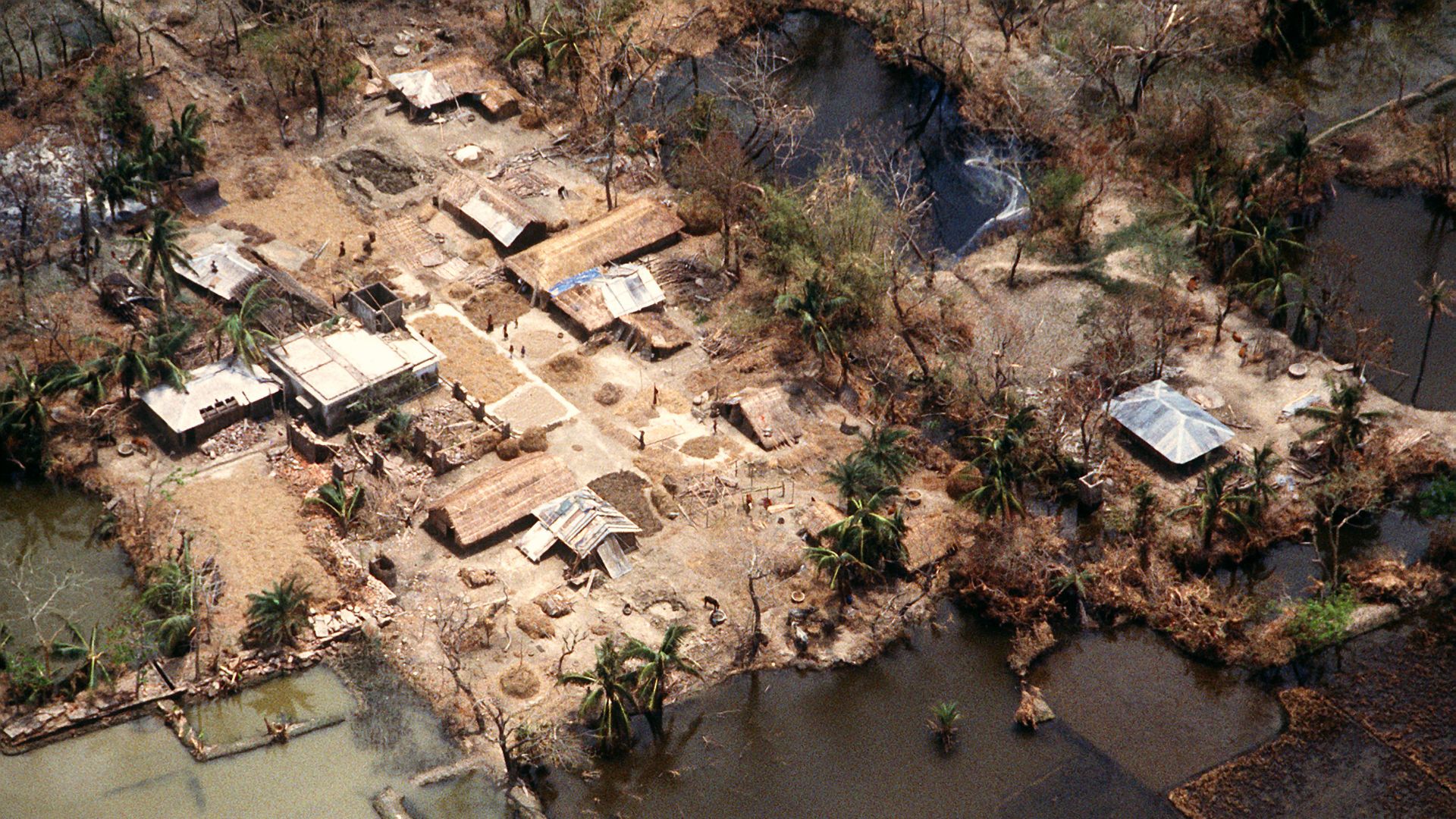 Airman 1st Class Cheryl Sanzi (USAF) on Wikimedia
Airman 1st Class Cheryl Sanzi (USAF) on Wikimedia
19. Aleppo Earthquake
Presumed to have occurred on October 11, 1138, the Aleppo earthquake is often listed as the third deadliest earthquake in history. It was preceded by a smaller tremor just the day before, and the main one caused extensive damage, destroying the citadel. It's estimated that over 230,000 people were killed.
20. Eruption of Mount Tambora
Mount Tambora is a volcano sitting on the northern coast of Indonesian island Sumbawa. Its explosion in 1815 is noted as the largest and most powerful volcanic eruption ever recorded in history, and the sheer ferocity of its blast tore much of itself apart. An estimated 10,000 people were killed by pyroclastic flows, and many more—upwards of an estimated 90,000—died from disease and famine.
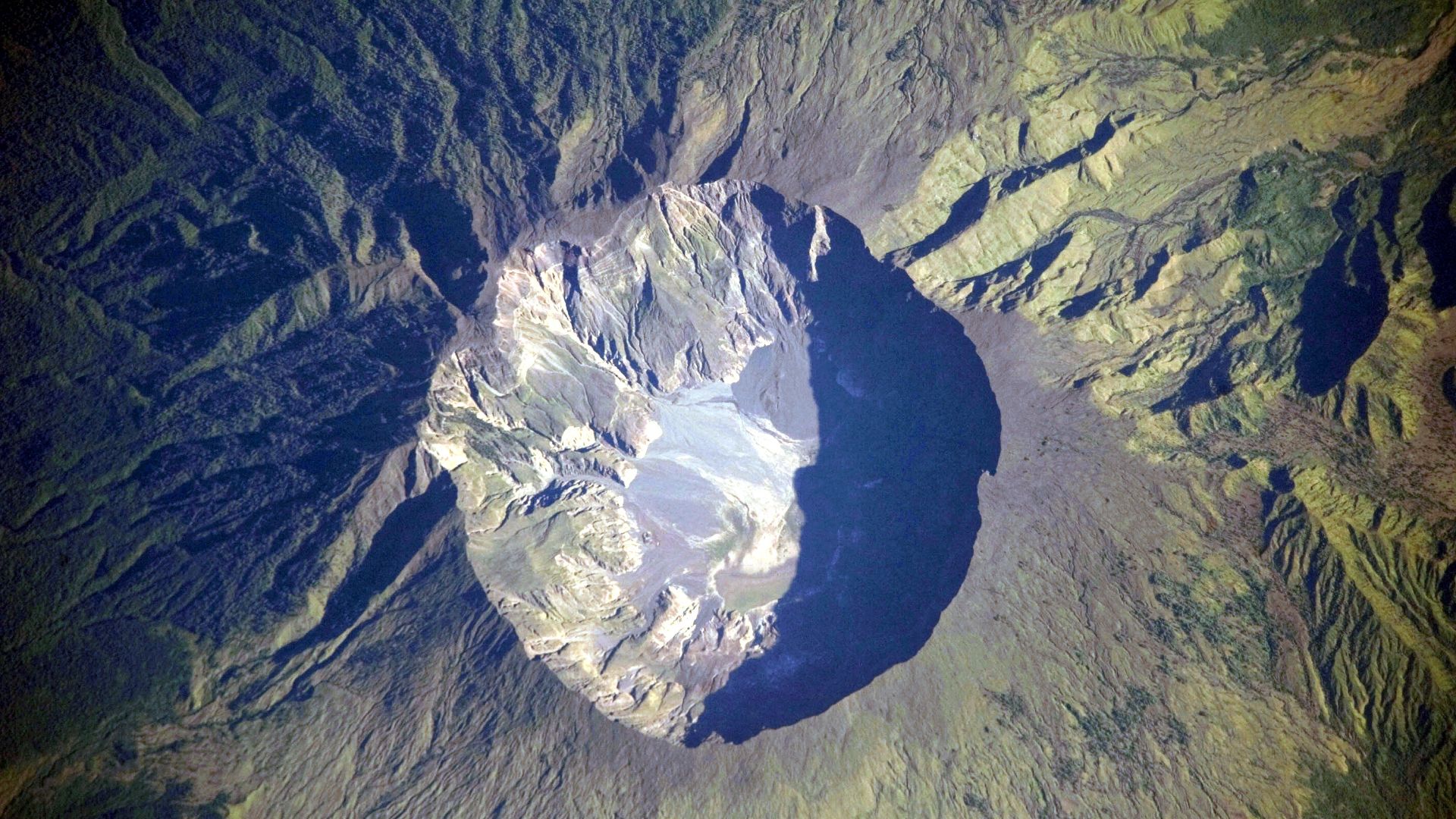 This image was taken by the NASA Expedition 20 crew. on Wikimedia
This image was taken by the NASA Expedition 20 crew. on Wikimedia
KEEP ON READING

The 20 Most Recognized Historical Figures Of All Time
The Biggest Names In History. Although the Earth has been…
By Cathy Liu Oct 4, 2024
10 of the Shortest Wars in History & 10 of…
Wars: Longest and Shortest. Throughout history, wars have varied dramatically…
By Emilie Richardson-Dupuis Oct 7, 2024
10 Fascinating Facts About Ancient Greece You Can Appreciate &…
Once Upon A Time Lived Some Ancient Weirdos.... Greece is…
By Megan Wickens Oct 7, 2024
20 Lesser-Known Facts About Christopher Columbus You Don't Learn In…
In 1492, He Sailed The Ocean Blue. Christopher Columbus is…
By Emilie Richardson-Dupuis Oct 9, 2024
20 Historical Landmarks That Have The Craziest Conspiracy Theories
Unsolved Mysteries Of Ancient Places . When there's not enough evidence…
By Megan Wickens Oct 9, 2024
The 20 Craziest Inventions & Discoveries Made During Ancient Times
Crazy Ancient Inventions . While we're busy making big advancements in…
By Cathy Liu Oct 9, 2024

